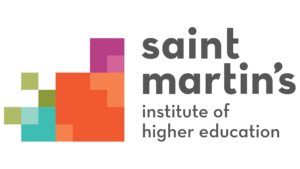1-5 December 2025
This year’s ICIDS (International Conference on Interactive Digital Storytelling) will return to Europe. The hosting country is the Mediterranean island of Malta, with a rich history featuring most of the European powers and reaching back to some of the earliest civilizations, with Neolithic remains dating back to 4000 BC. This history is characterized by decisive battles which shaped world history and by foreign rule due to the country’s strategic position between Africa, Europe and the Middle East. This also led to it both being influenced by many cultures while at the same time becoming influential in art, music, and architecture, way beyond its own shores. Malta’s future-looking economy has attracted iGaming and FinTech companies through early regulation and supportive legal frameworks, The island also embraced the opportunities offered by the recent wave of AI through its National AI Strategy, aiming to position Malta as a testbed for AI innovation in areas like healthcare, transport, and public services. We are happy to be able to host the conference in such a place and we hope that its rich tapestry of the past, the present, and the future will enrich how we look at IDN during the conference.
Over the last years we have seen an increasing injection of generative AI into the development, performance and analysis of IDNs. Just as Malta’s unique cultural identity emerged from the convergence of multiple influences, our field had from the beginning on adapted AI, among other views and technologies. Now we stand at an intersection where AI and human creativity meet to form new patterns of narrative expression.
Like Malta’s architectural and artistic heritage, where diverse cultural elements combine to create something uniquely beautiful, AI systems are now collaborating with human creators to generate ever-shifting narrative possibilities and story worlds. This situation reminded us of Janet Murray’s keynote at ICIDS 2018 in Dublin, where she discussed her kaleidoscopic view on IDN research. She described IDNs as environments that support the analysis of the same event in multiple contexts and at the same time foster the imagination of multiple variants of the same scenario. This has inspired the main theme of this year’s conference: Kaleidoscopic Machines.
The aim of this year’s conference is rather programmatic: Applying retelling we look at the past to understand what worked, why or why not; we offer new works to describe the current thinking; and we present critical and thought-provoking visionary contemplations to look ahead. Through discussion of the resulting views, we hope to gain an understanding of what we aim to reach out for in the years to come — memory machines, creative post-coding environments that are rooted in core human stories, non-human generated multisensorial environments, narratives driven by brain-computer interfaces, kaleidoscopic machines, or even more new types of IDN that can help to understand an increasingly complex world better. All this should help us to reflect on our current foundations and on how related methodological issues need to be further developed. In this sense, we invite the interactive narrative global community to think about our field in the realm of AI, its influence on creation and creativity, and see how far we intend to go.
We encourage authors to consider possible connections to this theme and we will foreground contributions that focus on the topic. But we also emphasize that there is no requirement that papers or workshops reflect the theme, either implicitly or explicitly—it is meant only as inspiration and is not intended to impose a constraint on other possible contributions and topics relevant to the field of Interactive Digital Storytelling.
Please review the following areas of interest and descriptions of types of contributions for more consideration:
Paper submissions are invited into one of the main conference areas listed below.
Please note that the defined areas are intended to be general, and we invite authors to interpret them broadly. They are meant to help us find appropriate reviewers and design a program that reflects a diverse range of interests on the topic of Interactive Digital Storytelling.
Papers exploring fundamental, theoretical aspects of interactive digital storytelling, narrative structures, interactivity, to foster the conceptual underpinnings of IDNs. In this context the placement of theory in a historic context is also appreciated.
Research on frameworks, procedures, and pipelines that support a common understanding of the analysis of the principles of methods, rules, and postulates employed or to be employed in the field, in the best case as a standard. This area welcomes papers on innovative tools, methodologies (i.e. for validation or replication studies), and technical frameworks for creating IDNs.
Explorations of interactive digital storytelling in practice, including educational applications, collaborative narrative experiences, virtual worlds, games, and performances. This area examines the implementation of interactive narratives across various media and contexts, with attention to audience engagement and practical outcomes.
Analysis of sociocultural implications and ethical dimensions of interactive digital storytelling, including representation, accessibility, cultural context, power dynamics, and authorship issues. This area welcomes papers that critically examine the impact of interactive narratives and question underlying assumptions about story creation and reception of IDNs.
The following advertised conferences bearing the acronym ICIDS as well as the title “International Conference on Interactive Digital Storytelling” allegedly being organised in Geneva, Switzerland and Indonesia respectively are in no way affiliated with ARDIN nor with this conference and are a blatant attempt to profit from our reputation.
Fake ICIDS Conference 1
Fake ICIDS conference 2
Please note that any submissions to any of these conferences will NOT be considered for acceptance to ARDIN’s ICIDS conference simply because they will not be received by us for consideration.
Papers may be either long or short but must present interesting and novel work at all stages of completion. The appropriate length should be determined by the author(s) to best represent the material they choose to foreground. All papers may contain images and/or figures. However, note that any images or figures not produced by the authors will require copyright clearance.
Full papers (4000-6000 words, excluding references, to be published in the proceedings).
Short papers (2000-4000 words, excluding references, to be published in the proceedings).
Late Breaking Work (2000-3000 words, excluding references, to be published in the proceedings) describing works in progress, working, presentable systems, or brief explanations of a research project. Late Breaking Work will be presented at the conference in the form of a demo or poster session, not a full presentation, and should be selected if the full or short paper formats are unsuitable for representing the proposed research, due to their unfinished nature.
Abstracts and references do not count toward the word limits.
ICIDS follows a strict double-peer review process, please fully anonymize your paper. Non-anonymized papers will be desk-rejected.
Please note that papers must be written in English, and only electronic submissions in PDF format will be considered for review. Publication is conditional on a minimum of one author registering for the conference to present the work to the community. Successful submissions will be included as part of the conference proceedings published by Springer.
All submissions must follow the Lecture Notes in Computer Science (LNCS) format, available at: https://www.springer.com/gp/computer-science/lncs.
Authors are also invited to refer to previous ICIDS conference proceedings for format, style, and inspiration: https://link.springer.com/conference/icids
Authors should consult Springer’s authors’ instructions and use their proceedings templates, either for LaTeX or for Word, for the preparation of their papers. Springer’s proceedings LaTeX templates are available in Overleaf. Springer encourages authors to include their ORCIDs in their papers. In addition, the corresponding author of each paper, acting on behalf of all of the authors of that paper, must complete and sign a Consent-to-Publish form. The corresponding author signing the copyright form should match the corresponding author marked on the paper. Once the files have been sent to Springer, changes relating to the authorship of the papers cannot be made.
Please, also consult Springer’s AI policy: https://www.springer.com/gp/editorial-policies/artificial-intelligence–ai-/25428500
The best experience of ICIDS is by attending in person, but this is a fully hybrid conference so remote attendance is possible if none of the authors of a paper can travel to the conference. In this case, publication of the contribution in the proceedings is conditional on registration and remote presentation (either live or as a pre-recorded video, depending on the final arrangements).
Remote participants need to be aware that the conference will take place in the CET time zone (GMT +1).
Submissions are accepted through Easychair via the SUBMIT button below.
NOTE: If you cannot decide which track covers your paper or you think it could be submitted to several tracks, then please submit to ICIDS (the first item of the list). Thanks.


